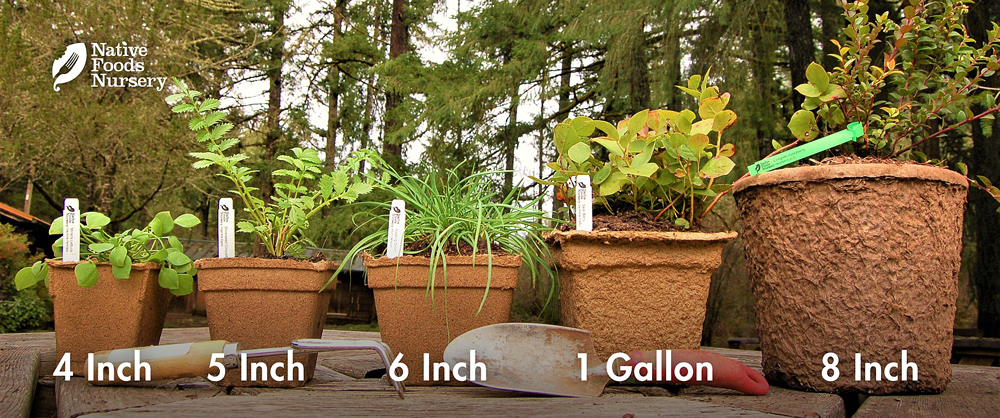Biscuitroot ~ Bundle of 3 Bare-root
- Current Stock:
- 0
- Other Names:
- Indian Parsley, Fernleaf Desert-parsley, Fern-leaved Desert-parsley, Chocolate Tips, Fernleaf Lomatium
- Latin Name:
- Lomatium Dissectum
Biscuitroots are a genus of drought-tolerant herbs, native to the Western states with many edible and medicinal qualities. We offer two species: Fernleaf Biscuitroot (Lomatium dissectum) and Barestem Biscuitroot (Lomatium nudicaule), the first being more commonly used as a medicinal, and the latter as an edible (although they both have both qualities).
Edible & Medicinal Uses
The starchy root vegetable of this native food can be eaten cooked or ground into flours, with a unique, earthy and spicy flavor. The young leaves and shoots are a hardy spring green, eaten raw or cooked, with a taste like parsley. The seeds are especially aromatic and spicy like Caraway - a great flavoring agent for soups and stews.
Fernleaf Biscuitroots are more commonly known for their medicinal value, whereas the Barestem Biscuitroots are more known for their delicious and sweet roots if harvested when young before they grow woody.
Lomatiums are used as a panacea for a wide variety of ailments, from respiratory infections to skin complaints to digestion issues to arthiritis. The volatile oils in the roots, which give the spicy flavor, are what is behind much of the medicinal action Lomatiums have on the respiratory system. These volative oils are antiviral and antibiotic, as well as antibacterial and antifungal. The Fernleaf Biscuitroot in particular stops the growth of invading viruses, bacterial and funguses, without harming good bacteria. This makes Lomatium a powerful ally to have in your garden or your medicine cabinet for when colds, flus, and respiratory illnesses come around.
***Fernleaf Biscuitroot can resemble Poison Hemlock in the wild. Confirm identification before any wild harvest.***
***Some people with underlying health conditions can experience a serious detox rash from ingesting Fernleaf Biscuitroot. It is not harmful to the body, but very uncomfortable. Use at your own risk.***
Ornamental Qualities
Fernleaf Biscuitroot is a perennial herb that brings a lush appearance to dryland gardens (but it can handle wet, too). Resprouting every spring from its underground taproot, it grows graceful fern-shaped leaves and yellow to purple carrot-like flowers. A great addition to any herb patch, or amidst other sun-loving perennial herbs like Indian Celery and Black Sunflower. Barestem Biscuitroot has firm, ovular leaves that come to a point at the end, with hollow stems reaching upwards into multiple yellow umblet flowers. The leaves are beautiful even after the yellow blossoms have bloomed and faded.
Environment and Culture
Fernleaf Biscuitroot’s wild home is in dry meadows, rocky hillsides, and coastal bluffs through the West. Its' leaves provides critical early-spring forage for many wildlife species; its flowers attract many native pollinators, its seeds feed many birds, and its foliage is an important food source for Sage Grouse Hens. It can be found growing in the wild alongside Black Sunflower and Indian Ricegrass.
Barestem Biscuitroot is most commonly found on dry, rocky hillsides amongst native grasses such as Blue Bunchgrass and California Fescue. Like the Fernleaf Biscuitroot, Barestem Biscuitroot attracts native pollinators of all kinds. Both varieties of Biscuitroot are drought resistant once well established and important plant foods for the ecosystem.
Northwest Native American tribes today still value this special plant as food, medicine, and family. Despite great cultural losses, they continue to work towards stewarding and restoring wild populations, both strengthening the integrity of the ecology and sustaining their cultural heritage and wisdom. These strong and recovering peoples and plants deserve our respect, gratitude, and reparations. (Learn more & how to help on our Charitable Giving page.)
Harvest, Care, and Preparation
If you have gophers in the area, care must be taken to protect roots from predation. Besides this, Biscuitroots are quite easy to care for, and need very little water. They spread by seed, which can be manually re-planted to increase the patch size.
Harvesting the root requires digging the entire plant, and is best done during dormancy of Fall/Winter. Harvest roots within the first two years for fresh eating, as they are still tender enough (older roots may be better for medicine). The root can then be cleaned, peeled, and cooked like a parsnip. Serve alongside other root crops. See our blog for a great recipe.
The leaves and young shoots are an early spring treat, easily plucked or cut and added to raw salads or vegetable dishes. Only harvest a few young shoots from each plant each spring.
Seeds are mature in mid-summer and can be easily stripped or shaken from the plant and stored as a seasoning - used ground or whole in many dishes like Carraway seed.
Native Range: Western States
USDA zones: 5-9
Ease of Care: Easy
Deer Resistance: Low-Moderate
Light Requirements: Full Sun
Soil Type: Prefers loose, well-drained.
Water Requirements: Dry to Moist
Pollination: Self-fertile
Bearing Age: 2 yrs from seed
Size at Maturity: to 3 feet
Plant Spacing: 24 inches
Bloom Time: Spring
Harvest Time: All year
Pot Sizing Guide

Our policy lasts 30 days. If 30 days have gone by since your purchase, unfortunately we can’t offer you a refund or exchange. To be eligible for a return, your item must be unused and in the same condition that you received it. It must also be in the original packaging. Gift cards are non-refundable. Once your return is received and inspected, we will send you an email to notify you that we have received your returned item. We will also notify you of the approval or rejection of your refund. If you are approved, then your refund will be processed, and a credit will automatically be applied to your credit card or original method of payment, within a certain amount of days.






